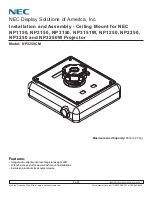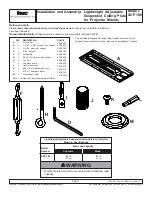
85
unforeseen changes in business assumptions
could negatively affect the valuations of those
long-lived assets. These unforeseen changes
include a possible further decline in demand for
TV display CRTs due to a shift in demand from
CRT displays to LCD and plasma panel displays.
In the year ended March 31, 2003, Sony
recorded impairment charges for long-lived
assets totaling 12.4 billion yen. It included 8.1
billion yen for the impairment of semiconduc-
tor and computer display CRT manufacturing
equipment to be abandoned or to be sold in
connection with certain restructuring activities
in the Electronics segment. It also included 2.7
billion yen for the impairment of a CD manu-
facturing facility in the U.S., the fair value of
which was estimated by using methods such
as a survey of the local real estate market.
In the year ended March 31, 2004, Sony
recorded impairment charges for long-lived
assets totaling 16.1 billion yen. It included 5.3
billion yen for the impairment of long-lived
assets such as semiconductor and TV display
CRT manufacturing equipment to be aban-
doned or sold in connection with certain
restructuring activities in the Electronics
segment. It also included 3.0 billion yen for
the impairment of long-lived assets in Music
segment including a certain CD manufactur-
ing facility to be abandoned or sold and a
recording studio and equipment to be held
and used in Japan. Fair value of these assets
is determined using estimated future dis-
counted cash flows which are based on the
best information available.
GOODWILL AND OTHER INTANGIBLE ASSETS
Goodwill and other intangible assets that are
determined to have an indefinite life are not
amortized, but are tested for impairment in
accordance with FAS No. 142 on an annual
basis and between annual tests if an event
occurs or circumstances change that would
more likely than not reduce the fair value of
these assets below their carrying value. Such
an event would include unfavorable variances
from established business plans, significant
changes in forecasted results or volatility inher-
ent to external markets and industries, which
are periodically reviewed by management.
Specifically, goodwill impairment is determined
using a two-step process. The first step of the
goodwill impairment test is used to identify
potential impairment by comparing the fair
value of a reporting unit (Sony’s operating
segments or one level below the operating
segments) with its carrying amount, including
goodwill. If the fair value of a reporting unit
exceeds its carrying amount, goodwill of the
reporting unit is considered not impaired and
the second step of the impairment test is
unnecessary. If the carrying amount of a report-
ing unit exceeds its fair value, the second step
of the goodwill impairment test is performed to
measure the amount of impairment loss, if any.
The second step of the goodwill impairment
test compares the implied fair value of the
reporting unit’s goodwill with the carrying
amount of that goodwill. If the carrying amount
of the reporting unit’s goodwill exceeds the
implied fair value of that goodwill, an impair-
ment loss is recognized in an amount equal to
that excess. The implied fair value of goodwill is
determined in the same manner as the amount
of goodwill recognized in a business combina-
tion. That is, the fair value of the reporting unit
is allocated to all of the assets and liabilities of
that unit (including any unrecognized intangible
assets) as if the reporting unit had been ac-
quired in a business combination and the fair
value of the reporting unit was the purchase
price paid to acquire the reporting unit. Other
intangible assets are tested for impairment by
comparing the fair value of the intangible asset
with its carrying value. If the carrying value of
the intangible asset exceeds its fair value, an
impairment loss is recognized in an amount
equal to that excess.
Determining the fair value of a reporting
unit under the first step of the goodwill impair-
ment test and determining the fair value of
individual assets and liabilities of a reporting
unit (including unrecognized intangible assets)
under the second step of the goodwill impair-
ment test is judgmental in nature and often
involves the use of significant estimates and
assumptions. Similarly, estimates and assump-
tions are used in determining the fair value of
other intangible assets. These estimates and
assumptions could significantly impact whether
or not an impairment charge is recognized as
well as the magnitude of any such charge. In
its impairment review, Sony performs internal
valuation analyses or utilizes third-party
valuations when management believes it to be
appropriate, and considers other market infor-
mation that is publicly available. Estimates of
fair value are primarily determined using dis-
counted cash flow analysis. This approach uses
significant estimates and assumptions includ-
ing projected future cash flows, the timing of
such cash flows, discount rates reflecting the
risk inherent in future cash flows, perpetual
growth rates, determination of appropriate
market comparables and the determination of
whether a premium or discount should be
applied to comparables. During the year ended
March 31, 2004, Sony recorded a charge for
the impairment of goodwill of 6.0 billion yen
in the Electronics segment. This impairment
charge reflected the overall decline in the fair
value of a subsidiary within the Electronics
segment. The fair value of that reporting unit
was estimated principally using the expected
present value of future cash flows utilizing a
third party valuation.
Management believes that the estimates of
future cash flows and fair value are reason-
able; however, changes in estimates resulting
in lower future cash flows and fair value due to
unforeseen changes in business assumptions
could negatively affect the valuations, which
may result in Sony recognizing impairment
charges for goodwill and other intangible
assets in the future. As of March 31, 2004, a
10 percent decrease in the fair value of each
of Sony’s reporting units would not have
resulted in a material impairment charge.
PENSION BENEFITS COSTS
Employee pension benefit costs and obligations
are dependent on certain assumptions including
discount rates, retirement rates and mortality
rates, which are based upon current statistical
data, as well as expected long-term rates of
return on plan assets and other factors. Specifi-
cally, the discount rate and expected long-term
rate of return on assets are two critical assump-
tions in the determination of periodic pension
costs and pension liabilities. Assumptions are
evaluated at least annually and when events
occur or circumstances change which could
have a significant effect on these critical as-
sumptions. In accordance with U.S. GAAP, ac-
tual results that differ from the assumptions are
accumulated and amortized over future periods.
















































